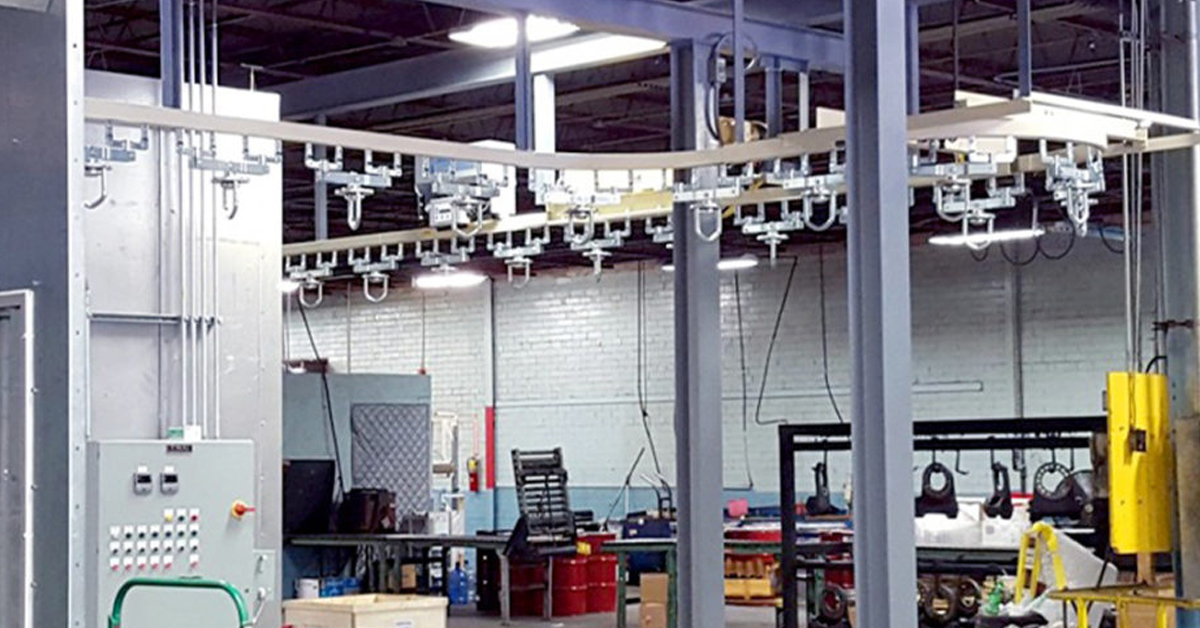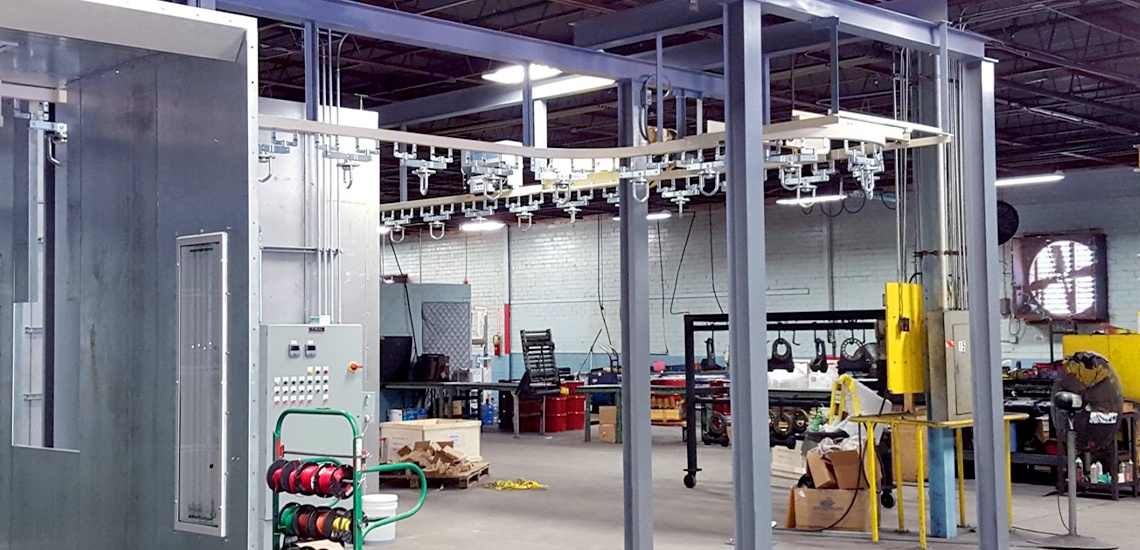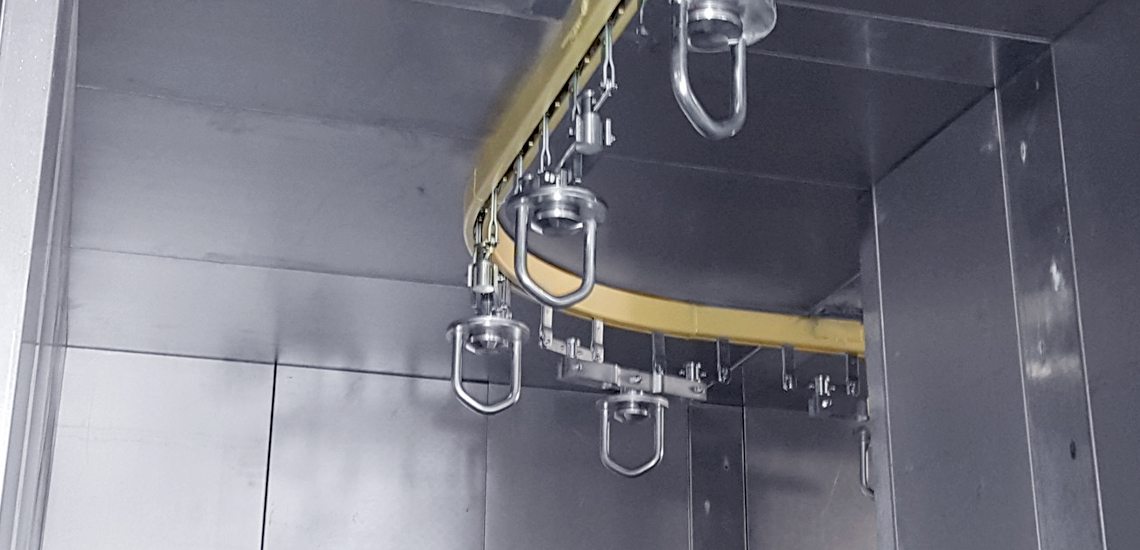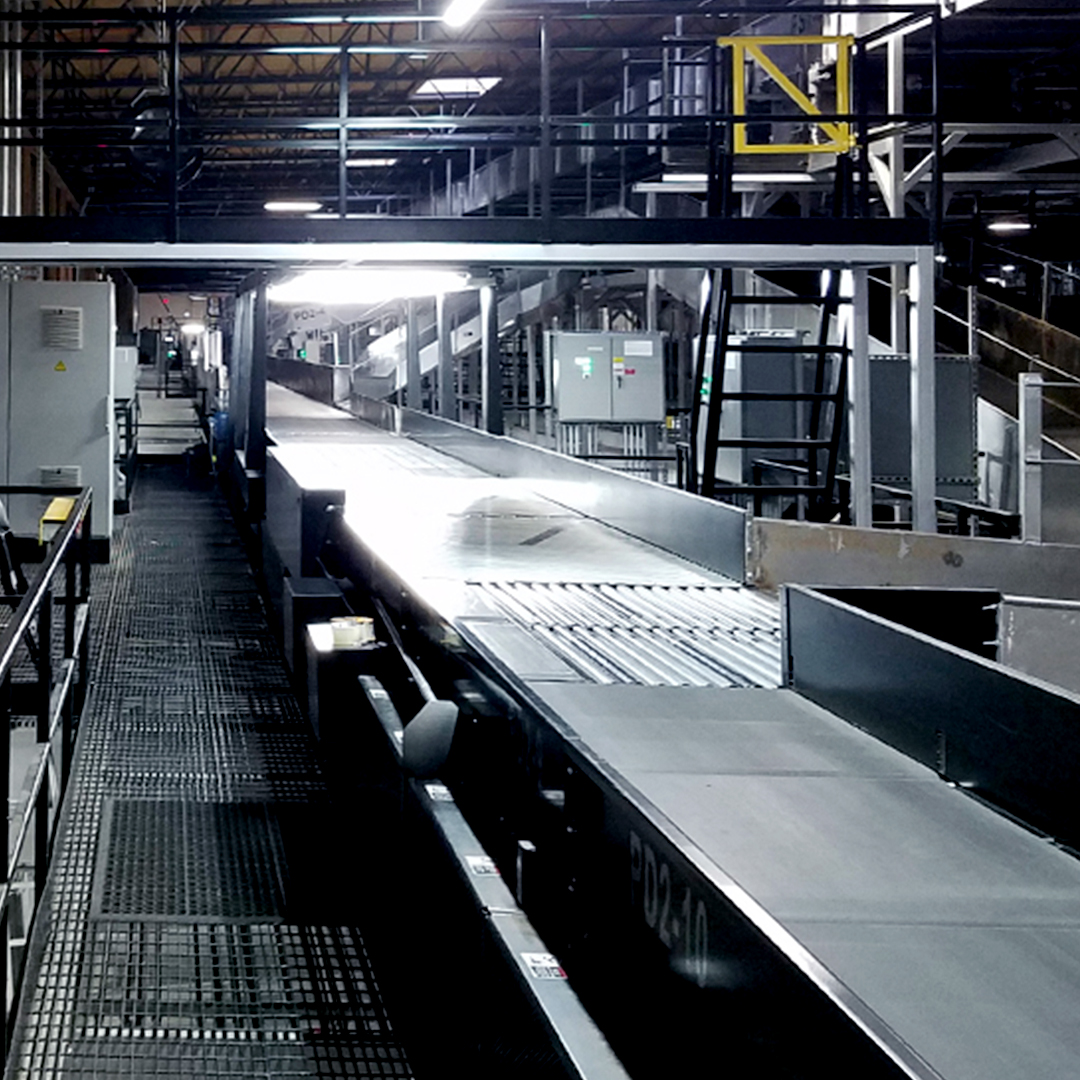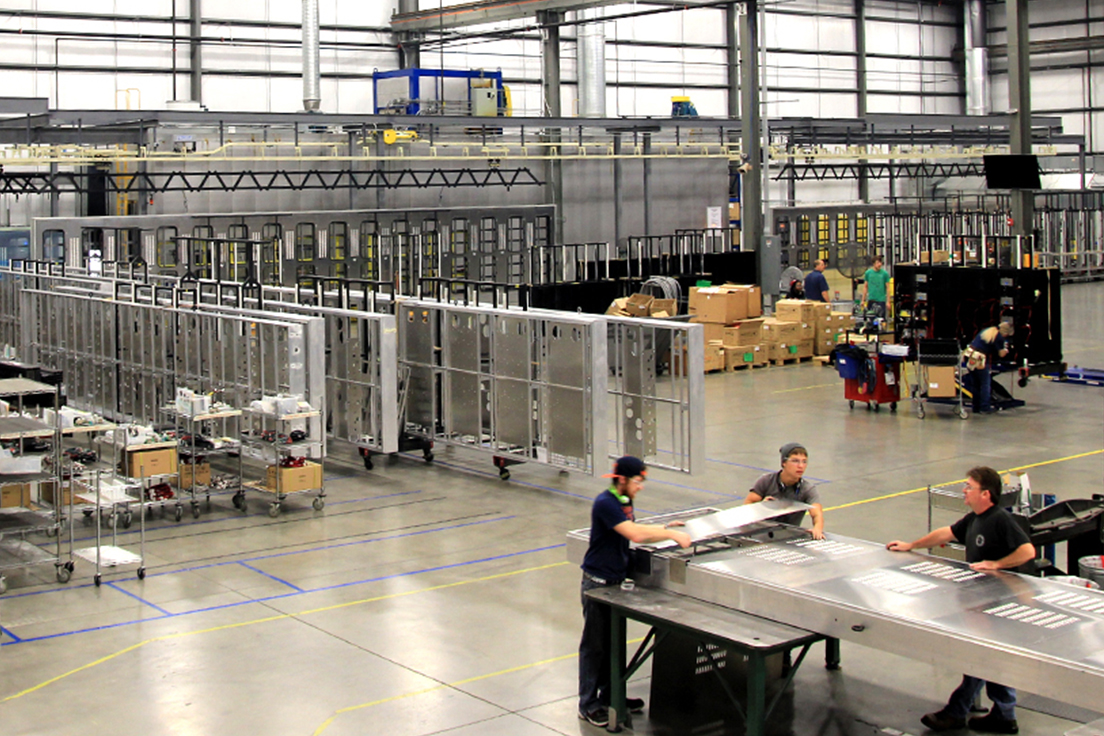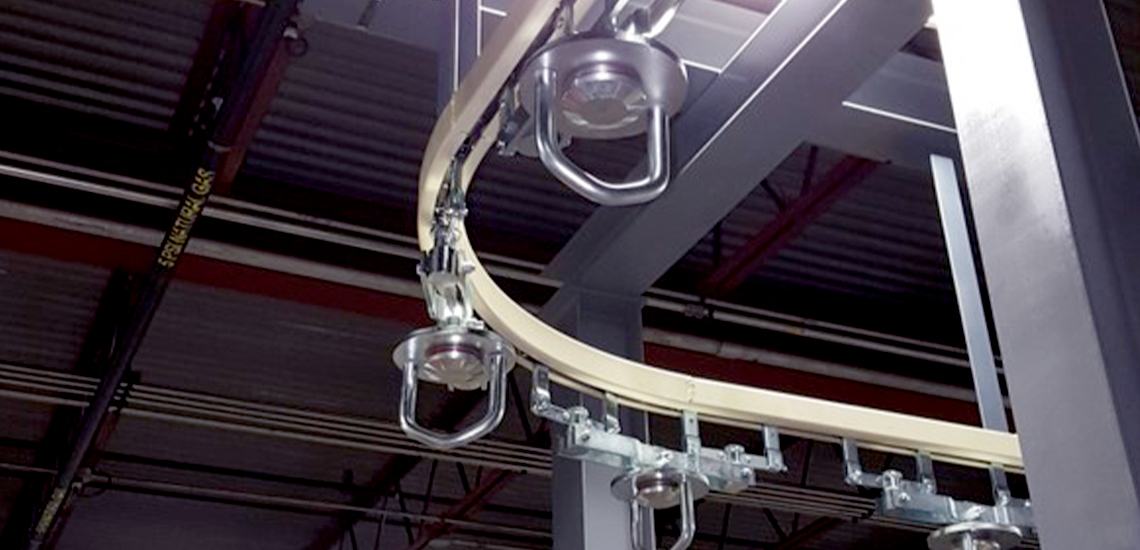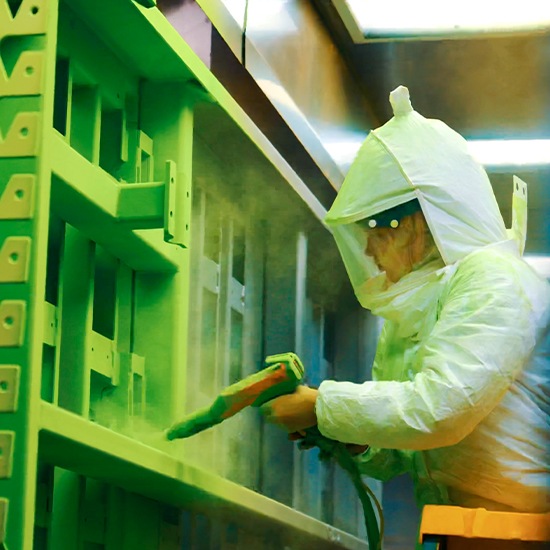
Selecting the right paint finishing system is akin to setting the foundation for a building. The right choice ensures operational efficiency, cost-effectiveness, and a flawless finish that meets industry standards. On the other hand, a misstep can lead to inefficiencies, increased operational costs, and inconsistent quality. With diverse options available in the market, how do you determine which paint finishing system aligns with your needs?
In this guide, we’ll navigate the various considerations essential for this decision-making process, ensuring you choose a system that enhances your operational prowess. With a legacy of pioneering solutions for complex operational challenges, our team at Richards-Wilcox Conveyor brings a wealth of knowledge and experience to the table, ensuring you have all the insights you need to make an informed decision.
Understanding Your Needs: Key Considerations in Selecting a Paint Finishing System
- Complexity of Your Finishing Process: Begin by assessing the intricacies of your finishing requirements. Do you need multiple coating layers? Are there specific drying or curing times for each?
- Available Space: The physical space you have will determine the type of conveyor and finishing system you can accommodate. Some systems require more overhead or floor space than others.
- Finishing or Treatment Process: Depending on whether you’re looking for dip, powder, spray paint, or electrocoating, your system requirements will vary.
- Size and Weight of Parts: The dimensions of the components you’re coating will influence the strength and design of your conveyor system. Larger, heavier parts might need more robust conveyor chains or trolleys.
- Material Type: The material of the parts you’re coating can determine the pre-treatment required and the type of paint or finish suitable for best adhesion and results.
- Flexibility: Do you foresee changes in your product line or finishing requirements in the near future? If so, opting for a system that offers flexibility will be essential.
- Part-Tracking Options: Consider how you’ll track parts through the finishing process. This can influence conveyor design and the necessary control systems.
- Connections: The manner in which trains, trolleys, and other components connect can influence the efficiency and speed of your finishing process.
- Sustainability: If environmental considerations are vital for your operation, options like powder coating, which is notably more sustainable, might be your go-to.
Exploring Richards-Wilcox Conveyor Solutions
Choosing the right conveyor system significantly amplifies the efficiency of your paint finishing process. At Richards-Wilcox Conveyor, we have crafted systems tailored to various operational needs:
- Monorail Systems: The Efficient Choice
- Zig-Zag Enclosed Track Conveyor: Ideal for simple operations aiming for cost efficiency.
- Inverted Zig-Zag Conveyor: Offers the sturdiness of the Zig-Zag but with an inverted design for specific spatial requirements.
- Safe-Rail Monorail Enclosed Track Conveyor: Combines efficiency with safety, ensuring seamless operations.
- Power and Free Systems: Flexibility at Its Best
- Twin-Trak Side-by-Side Conveyor: A dual-track solution perfect for operations seeking adaptability.
- Over-Way Heavy Duty Over & Under Conveyor: Built for demanding environments where both power and flexibility are paramount.
Remember, integrating more automation into your conveyor system naturally bolsters its efficiency and adaptability, making your entire operation more streamlined and effective.
Navigating the Maze of Paint Applications: Which One is Right for You?
Deciding on the perfect paint application method for your operations can often seem like a daunting task. The application type you choose can directly influence the finish, durability, and overall quality of the product. Let’s delve into the prominent paint application types to help you make an informed decision:
1. Dip Coating:
- What it is: Immersing the part into a tank containing the paint or finish.
- Best for: Uniform coatings and parts with intricate designs.
- Considerations: Requires space for dip tanks and may necessitate extended drying times.
2. Powder Coating:
- What it is: Applying dry powder to a part electrostatically, followed by curing under heat.
- Best for: Durable finishes and enhanced sustainability.
- Considerations: Equipment for electrostatic application and curing ovens are necessary.
3. Spray Painting:
- What it is: Utilizing a sprayer to apply paint in a fine mist.
- Best for: Quick applications and parts of varying sizes.
- Considerations: Requires proper ventilation and can result in paint waste.
4. Electrocoating:
- What it is: A method where parts are dipped into a paint/water solution and paint is deposited electrochemically.
- Best for: High-quality finishes and intricate parts.
- Considerations: Needs electrical setups and specialized tanks.
Your choice will significantly depend on the material type, desired finish, and available resources. It’s also crucial to consider the integration of this application method with your conveyor system.
A harmonious synergy between the two ensures a smoother, more efficient finishing line. Whether you’re inclined towards a traditional paint method or looking to explore a robotic finishing system, Richards-Wilcox Conveyor stands ready to assist in integrating your chosen method seamlessly with our state-of-the-art conveyor systems.
Assessing Infrastructure and Adaptability: Ensuring Future-Proof Operations
As the business environment changes, so do the demands on your paint finishing systems. Investing in infrastructure that can evolve and adapt is not just a smart move, it’s essential. Here’s what to consider:
1. Space Utilization:
- Overview: Efficient use of available space can significantly impact your operations, especially if expansion is on the horizon.
- Our Solution: Our use of floor-mounted and overhead conveyor systems ensure optimal use of space, allowing for growth without major overhauls.
2. System Scalability:
- Overview: A scalable system can grow with your business, accommodating increased volumes and new product lines.
- Our Solution: Our conveyor systems design emphasizes modularity, letting you add or reconfigure components as your needs change.
3. Technological Integration:
- Overview: In the era of Industry 4.0, integrating advanced technologies, like robotic interfaces, into your finishing line is vital.
- Our Solution: We offer solutions that seamlessly integrate with both traditional and advanced robotic finishing systems, ensuring you stay at the forefront of innovation.
4. Sustainability and Environmental Concerns:
- Overview: With increasing environmental regulations and a push for greener operations, having a sustainable system is crucial.
- Our Solution: Our focus on solutions like powder coating underscores our commitment to sustainable and environmentally-friendly options.
5. Ease of Maintenance:
- Overview: Downtime can be costly. A system that’s easy to maintain ensures consistent operations and reduced interruptions.
- Our Solution: All our conveyor systems utilize our high-performance conveyor chain, which is the strongest and most reliable product of its time.
With Richards-Wilcox Conveyor’s breadth of options and custom solutions, you’re not just investing in a system for today, but partnering for a future of continued success.
Crafting the Optimal Path Forward
Choosing the right paint finishing system is more than a mere operational decision. It’s about sculpting the trajectory of your business, ensuring not only immediate efficiency but also long-term growth and adaptability. The myriad considerations — from the type of paint application to system flexibility and part tracking — each play a pivotal role in defining the success of your finishing line.
With Richards-Wilcox Conveyor by your side, you’re not merely getting a product; you’re gaining a partner with over a century of experience, expertise, and a commitment to excellence. By leveraging our comprehensive solutions, you’re setting your business on a course towards heightened efficiency, unrivaled quality, and unparalleled operational success.
In an evolving industrial landscape, the decisions you make today pave the path for tomorrow. Ensure your choices are informed, strategic, and backed by industry-leading expertise. Your business deserves nothing less.
